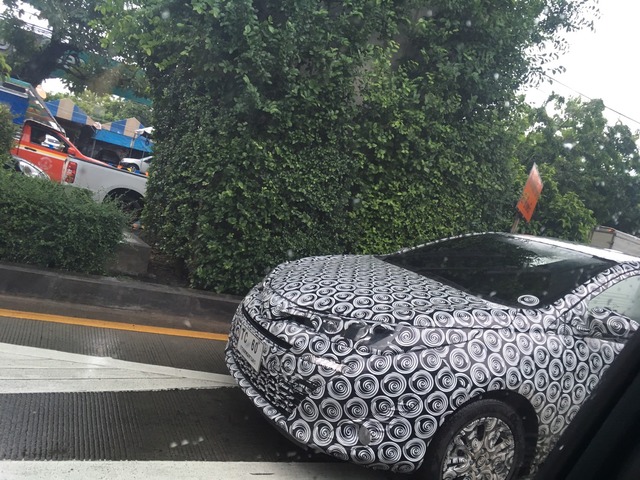ASEAN-spec 2017 Toyota Yaris (facelift) spotted testing for the first time
Will feature a sleeker front fascia and restyled rear end.
Following the launch of the 2017 Toyota Vios, its hatchback counterpart, the ASEAN-spec Toyota Yaris hatchback - will soon receive a comprehensive facelift. A pre-production test mule with a complete body wrap has been spied testing in Thailand by a Headlight Mag member.

If you can notice carefully, the facelift borrows cues from the new Toyota Corolla Altis, featuring sleek and long LED headlamps that directly flow into a bold chrome bar housing a larger Toyota logo. There is a slim, wide air inlet below the grille, followed by the radiator grille, flanked by a pair of fog lamps. The changes are substantial and should help cultivate a new car appeal to the Yaris. We compared the images of the test prototype to the designs of the two Yaris versions sold in China to surmise that it is completely unique.
The rear-end also seems to significantly differ from the outgoing car. Gone are the vertical, stylised taillamps for a simple pair of horizontal, wraparound units likely LED-powered, and the bumper also appears to be sharper. The facelifted model features a shark fin antenna and roof spoiler. Dimensions are likely to be similar to the current car, which is 4,115 mm long, 1,700 mm wide and 1,475 mm tall, and has a gross weight of about 1.5 tonne.
The facelifted Yaris is likely to retain the 3NR-FE 1.2L four-cylinder petrol engine with Dual VVT-i available only with a Super CVT-i transmission, which develops 86 PS and 11.0 kg.m of max torque. The export-spec Yaris is will sport the 2NR-FBE 1.5-litre Dual VVT-i engine which develops 108 hp at 6,000 rpm and 140 Nm of torque at 4,200 rpm on the new Vios.

Also Read: 2018 Toyota Land Cruiser Prado (facelift) to release in September – Report
While one report said that Toyota Kirloskar Motor is positive about introducing the Toyota Yaris hatchback in India, multiple reports have confirmed that it will be the Toyota Vios that will make its way to the Indian market next year.
[Source: Headlight Mag]










